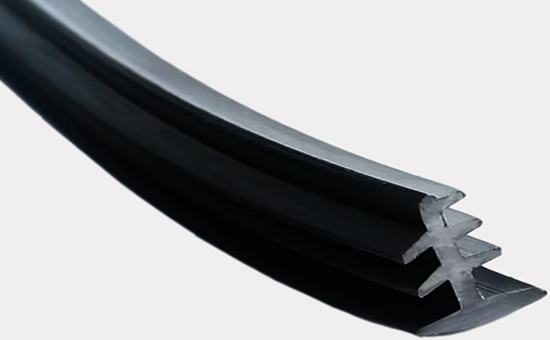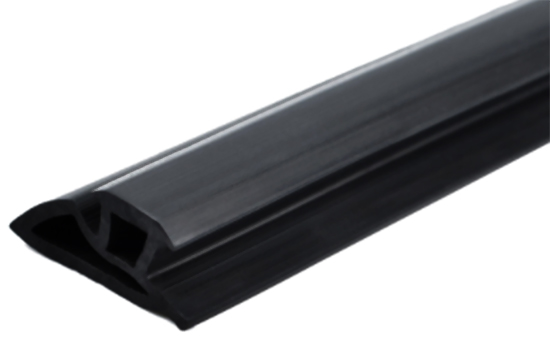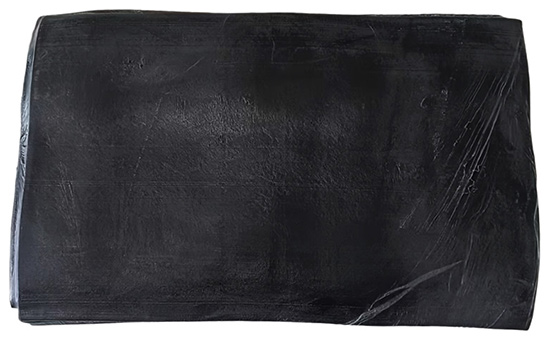The sealing strip processed from rubber as the main raw material is mainly used to use the elasticity of the lip, cavity, flange and other parts to produce contact pressure with the surface of the contact object to achieve the sealing effect, and is widely used in the construction industry, automobile industry, chemical industry, electronic equipment and other fields. Butyl reclaimed rubber has excellent air permeability, heat resistance, corrosion resistance, aging resistance, etc., can it be used in the production of rubber sealing strips? How to add better?
1. Application method of butyl reclaimed rubber in rubber sealing strip
(1) Butyl reclaimed rubber is used alone to produce rubber sealing strips
Butyl reclaimed rubber has the basic performance characteristics of butyl rubber, good air tightness, heat resistance, chemical corrosion resistance, and can directly replace butyl rubber to produce butyl rubber sealing strips with low performance requirements, effectively reducing the cost of raw materials.
(2) Butyl reclaimed rubber and butyl rubber are used together to produce rubber sealing strips
Butyl reclaimed rubber has good compatibility with butyl rubber, and can be used with butyl rubber in any proportion to produce sealing strips, improve the problems of difficult rubber cutting, easy sticking rollers, and slow eating speed of mixing compound during butyl rubber processing, improve the comprehensive index of rubber sealing strips, and reduce the cost of raw materials. The addition ratio of butyl reclaimed rubber to butyl rubber needs to be determined according to the specific performance requirements of the sealing strip and the formula vulcanization system.

(3) Butyl reclaimed rubber and ethylene propylene rubber are used together to produce rubber sealing strips
Butyl reclaimed rubber has excellent air tightness and water tightness, and EPDM rubber has good weather resistance and ozone resistance; When butyl reclaimed rubber is used to produce rubber sealing strips, the combination of EPDM rubber can further improve the compression set and aging resistance of the sealing strips, delay the aging process and prolong the service life.
Butyl reclaimed rubber can also be used with natural rubber, chlorobutyl rubber, chlorobutyl reclaimed rubber, EPDM reclaimed rubber, etc. to produce rubber sealing strips, which can improve the processing performance and use performance of sealing strips while effectively reducing raw material costs and saving labor and electricity costs.
2. Key points of the formula design of rubber sealing strips for the production of butyl reclaimed rubber
When using butyl reclaimed rubber as the main raw material to produce rubber sealing strips, the formula design needs to fully consider the use scenarios of the sealing strips, including whether there are special requirements for the weather resistance, ozone resistance, water resistance and other characteristics of the rubber compound, and appropriately adjust the matching system, especially the vulcanization system, reinforcement system and anti-aging system.

(1) Design of vulcanization system for butyl recycled rubber sealing strip
The commonly used vulcanization systems of butyl reclaimed rubber include sulfur vulcanization system, resin vulcanization system and quinone oxime vulcanization system. Butyl reclaimed rubber made of sulfur vulcanization has the characteristics of good processing performance and high mechanical strength; The butyl reclaimed rubber vulcanized rubber using the quinone oxime vulcanization system has excellent aging resistance, superheating steam resistance and compression deformation resistance, but the amount of compounding agent is large and the vulcanization speed is slow. The butyl reclaimed rubber compound using p-quinone oxime vulcanization has excellent heat resistance.
(2) Design of butyl recycled rubber sealing strip reinforcement filling system
Carbon black is mostly used as a reinforcing agent in the formulation of butyl recycled rubber sealing strips, and it can be used in combination with medium particle thermal cracking carbon black, spray carbon black or white carbon black, general carbon black, semi-reinforcing carbon black, high wear-resistant carbon black, and E4LYY822. The particle size of super wear-resistant furnace black, medium super wear-resistant furnace black, high wear-resistant furnace black, and mixable groove black is small, and the tensile strength and tear strength of vulcanized rubber are large; The particle size of fine-particle hot-fracturing carbon black and medium-particle hot-fracturing carbon black is larger, and the elongation of vulcanized rubber is higher.
(3) Design of softening system of butyl recycled rubber sealing strip: select plasticizers such as paraffin oil and naphthenic oil to improve the processing performance and flexibility of butyl recycled rubber.

(4) Butyl recycled rubber sealing strip anti-aging system design: butyl reclaimed rubber itself has good aging resistance, when choosing antioxidants, appropriate antioxidants are added according to the use environment of the sealing strip, such as 4010NA, RD, etc., to prevent rubber aging and degradation, and prolong the service life of butyl reclaimed rubber sealing strips.
In actual production, the rubber sealing strip produced by butyl reclaimed rubber as the main raw material has good air tightness, heat resistance, corrosion resistance and aging resistance, and the sealing strip used in building doors and windows, instrument shock absorption, insulating glass and other occasions can use butyl reclaimed rubber, reasonable design of rubber sealing strip formula, if necessary, with the appropriate amount of butyl rubber, EPDM rubber, chlorinated butyl rubber and other rubber materials, can further improve the comprehensive performance of the sealing strip, better adapt to construction, automobile, chemical, Electronics and other different industries.
Exclusive original article [commercial authorization] reprint, excerpt and excerpt in any form are prohibited without written authorization. Focus on Hongyun rubber: learn the process formula and raw material technology of producing rubber products from recycled rubber to help you reduce costs and increase profits